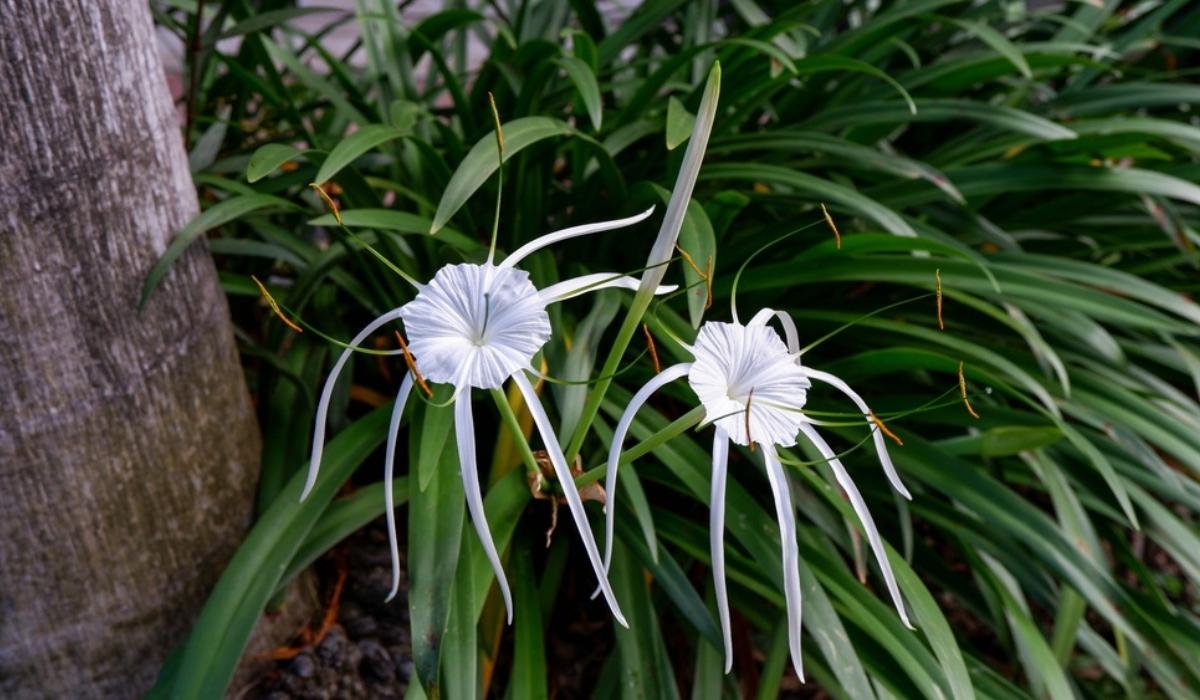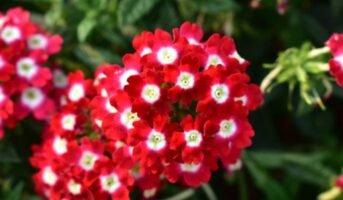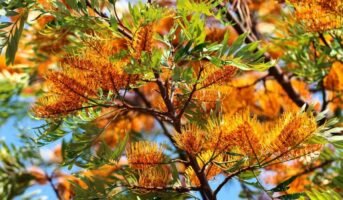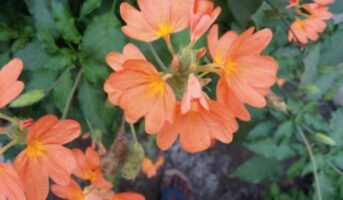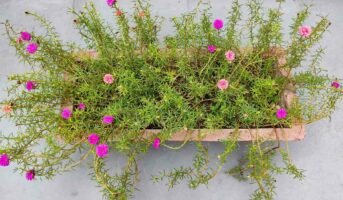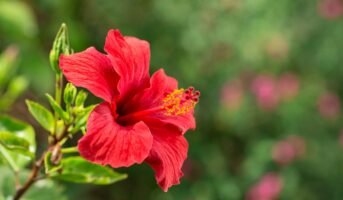A plant species of the genus Hymenocallis known as Hymenocallis littoralis, commonly known as the beach spider lily, is native to warmer coastal parts of Latin America and has become widely grown and naturalised in many tropical nations.
The beach spider lily requires a sizable growth container; during the first year of life, even young plants need a half-gallon pot or bigger. This bulb-based plant will shatter the pot it is in now to let you know when it needs a bigger one. This plant species needs a certain soil mixture, a lot of water, and sunshine to grow effectively.

Source: Pinterest
See also about: homalomena
Hymenocallis littoralis: Facts
| Botanical name: Hymenocallis littoralis |
| Type: A medium sized shrub |
| Flower: Yes |
| Also known as: Beach spider lily |
| Height: 3-4m tall |
| Season: Summer to autumn |
| Sun exposure: Keep in shade with a few hours of direct sunlight |
| Ideal temperature: 70 to 90 degrees Fahrenheit |
| Soil type: Well-drained |
| Soil pH: Slightly acidic to slightly alkaline |
| Basic requirements: Intermittent watering, indirect sunlight, home-made fertiliser |
| Ideal location for placement: Outdoors |
| Ideal season to grow: Mid summer |
| Maintenance: Low |
See also know about: Homalomena
Hymenocallis littoralis: How to grow?
Hymenocallis littoralis is an annual herbaceous plant that grows in the coastal regions. It can be grown indoors and outdoors. Hymenocallis littoralis plant’s leaves are long and spoon-shaped, with a serrated margin.
- If you want to grow hymenocallis littoralis indoors, first remove any dead leaves from the plant. Then fill up your pot with soil until it’s about 2 inches deep.
- To grow Hymenocallis littoralis, you will need to prepare the soil for planting by removing stones and debris from it.
- You should also add fertiliser to the soil in order for it to grow well.
- You should water your plant regularly so that it does not dry out too much or too little.
- You can also mulch around your plant if this helps keep its roots cool during summer months.
- You can use any kind of soil except for peat moss or composted manure because they might damage the roots of your plant.
- Make sure that the soil is well-drained before you put your plant into it so that water doesn’t stay there for too long and drowns out its roots instead of nourishing them properly.
- After this has been accomplished, place your Hymenocallis littoralis in its container so that only its roots are in contact with each other.
Hymenocallis littoralis: How to maintain?
Hymenocallis littoralis is a beautiful plant that is perfect for the front of your garden. If you want to make sure you have it growing well, here are some tips:
- Grow in full sun and keep it moist throughout the summer months.
- Maintain a regular watering schedule during the summer. Once per week is ideal.
- Avoid overhead watering unless you’re using drip hoses or other methods where water can drip off at an angle and not wet the leaves directly below it.
- Spring and summer are the best times to apply a balanced liquid fertiliser diluted by half every two weeks.
- You can increase humidity around your plants easily by maintaining a relative humidity of 40-50%.
- It is essential to move your plant outdoors for the summer so it can benefit from indirect sunlight. Spider lilies thrive in warm, sunny places.
Hymenocallis littoralis: Uses
- Hymenocallis leaves are administered externally to bruising and swelling in traditional Chinese medicine.
- In Central America, the bulbs of the Hymenocallis plant are frequently used in traditional medicine, most frequently in the form of an internal stew to cure asthma and as a poultice on boils. The flowers can occasionally be found in cough decoctions as well.
Hymenocallis littoralis: Common issues
- On average, this plant species encounters very few issues. Lack of blossoming or the production of tiny flowers is one of the most frequent conditions.
- Give your plant a month without fertiliser if it won’t blossom. Reduce watering to maintain the soil’s moisture and give it a darker environment than normal.
- If your plant still doesn’t bloom, make sure the soil is sufficiently moist and that it is getting enough light.
- You must examine your plant every day if you ever take it outside. It is necessary to get rid of snails and slugs whenever they are present since they like to eat the leaves of this plant.

Source: Pinterest
FAQs
From where did Hymenocallis littoralis originate?
What is the common name of Hymenocallis littoralis?
Beach spider lily is the common name of Hymenocallis littoralis.
Housing News Desk is the news desk of leading online real estate portal, Housing.com. Housing News Desk focuses on a variety of topics such as real estate laws, taxes, current news, property trends, home loans, rentals, décor, green homes, home improvement, etc. The main objective of the news desk, is to cover the real estate sector from the perspective of providing information that is useful to the end-user.
Facebook: https://www.facebook.com/housing.com/
Twitter: https://twitter.com/Housing
Email: [email protected]
